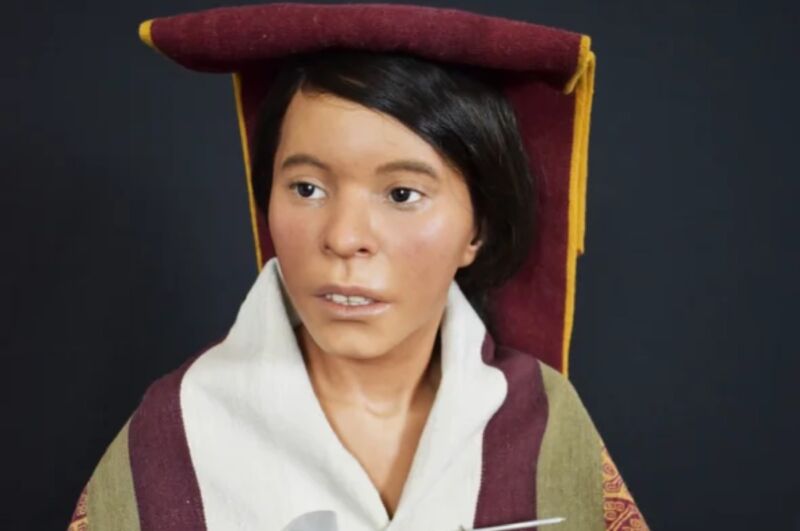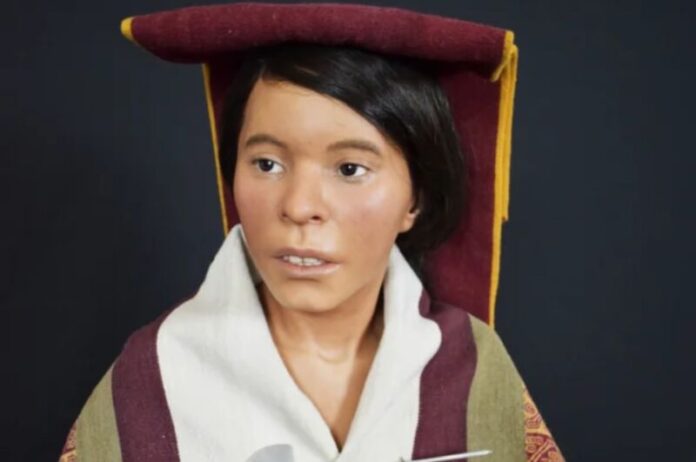
Enlarge / The final approximation of the Incan girl dubbed "Juanita" wearing clothing similar to what she was wearing when she died. (credit: Dagmara Socha)
There's rarely time to write about every cool science-y story that comes our way. So this year, we're once again running a special Twelve Days of Christmas series of posts, highlighting one science story that fell through the cracks in 2023, each day from December 25 through January 5. Today: Swedish forensic artist Oscar Nilsson combined CT scans of frozen mummified remains with skull measurements and DNA analysis to reconstruct the face of a 500-year-old Inca girl.
In 1995, archaeologists discovered the frozen, mummified remains of a young Inca girl high in the mountains of Peru, thought to have died as part of a sacrificial ritual known as Capacocha (or Ohapaq hucha). In late October, we learned how she most likely looked in life, thanks to a detailed reconstruction by Swedish forensic article Oscar Nilsson. A plaster bust of the reconstruction was unveiled at a ceremony at the Andean Sanctuaries Museum of the Catholic University of Santa Maria in Arequipa, Peru, where the girl's remains (now called Juanita) have been on near-continuous display since her discovery.
"I thought I'd never know what her face looked like when she was alive," archaeologist Johan Reinhardt told the BBC. Reinhardt had found the remains with Peruvian mountaineer Miguel Zárate at an altitude of 21,000 feet (6,400 meters) during an expedition to Ampato, one of the highest volcanos in the Andes. "Now 28 years later, this has become a reality thanks to Oscar Nilsson's reconstruction."
Read 7 remaining paragraphs | Comments
Ars Technica - All contentContinue reading/original-link]




